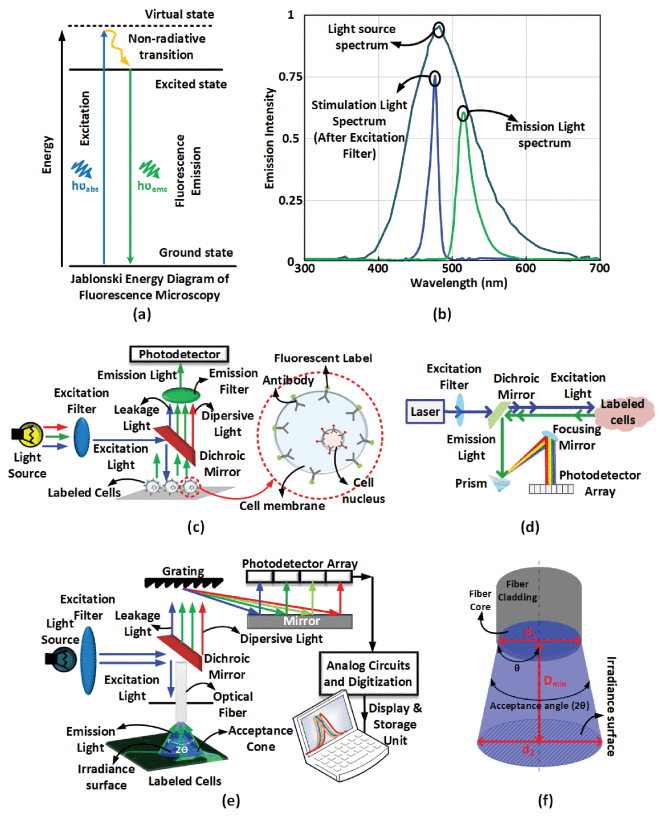Miniature Fiber-Spectrophotometer for Real-Time Biomarkers Detection
Access to portable devices with rapid and accurate technology to identify infections could prevent the diseases like novel coronavirus (SARS-CoV-2) from becoming a Global pandemic. Fluorescence cell spectrophotometry helps detect infectious diseases by identifying the genetic materials, RNAs, or DNAs of the viruses or bacteria. The technique can also be used to examine, analyze and characterize a diversified set of biomarkers, like proteins, from tissue and body sample to detect cancer.
However, the spectrophotometers used in the laboratory are heavy, expensive devices that require regular maintenance and can be handled only by trained professionals. It also needs a team of multidisciplinary groups under laboratory set-ups to read and evaluate the readings to make a diagnosis. Point-of-care (POC) portable devices that can easily be handled in the field and rapidly detect viruses, bacteria, and other biomarkers are required.
The researchers here have designed and proposed a wireless miniature cell fiber-spectrophotometer prototype for detecting micro-volume samples and rapidly identifying biomarkers in real-time outside the lab. The portable devices are helpful in remote or low-resource areas with limited access to a well-equipped laboratory.
A main advantage of the approach here is the use of spectrophotometry to measure the complete absorption spectrum associated with a biomarker instead of measuring only a narrow band of wavelengths. This approach provides higher precision, reduces errors, and improves the overall resolution of the measurements.
The proposed miniature fiber-spectrophotometer prototype uses a mini-spectrometer with high sensitivity mounted on an electronic board and enclosed with passive optical components inside a small 3D-printed casing. The system design includes a blue LED light source that has a narrow polar radiation pattern. The fluorescence light emitted by the sample gets collected by a multimode optical fiber, passes through a dichroic mirror, and enters the narrow input slit of the spectrometer for analysis. A low-power microcontroller provides the spectrometer's control and clock signals and interfaces with a Bluetooth wireless transceiver used to transmit spectral data to a remote Internet gateway.
The prototype's performance was assessed using two types of in vitro tests: selectivity and sensitivity. The selectivity tests were designed to verify the prototype's ability to differentiate between fluorophores. The sensitivity tests measured the prototype's ability to assess the concentration of a biomarker in a sample.
The prototype correctly identified micro-volume samples of tubulin protein, a well-known biomarker used to detect various types of cancer cells. It is a significant breakthrough since it can detect the presence of cancerous cells in real time, which can be sent to the laboratory for validation.
The prototype was characterized and used to measure stained cells in vitro. The measured performance shows limits of detection and quantification of 4 µg/mL and 20 µg/mL, respectively. Experimental measurements performed in vitro show that the prototype can differentiate between different fluorophores and evaluate the concentrations of analytes based on their measured fluorescence emissions.
The proposed miniature fiber-spectrophotometer prototype is cost-effective, power efficient, sensitive for detecting micro-volume samples, and can identify biomarkers in real time. The proposed prototype could revolutionize how we detect and analyze biomarkers outside the laboratory.




